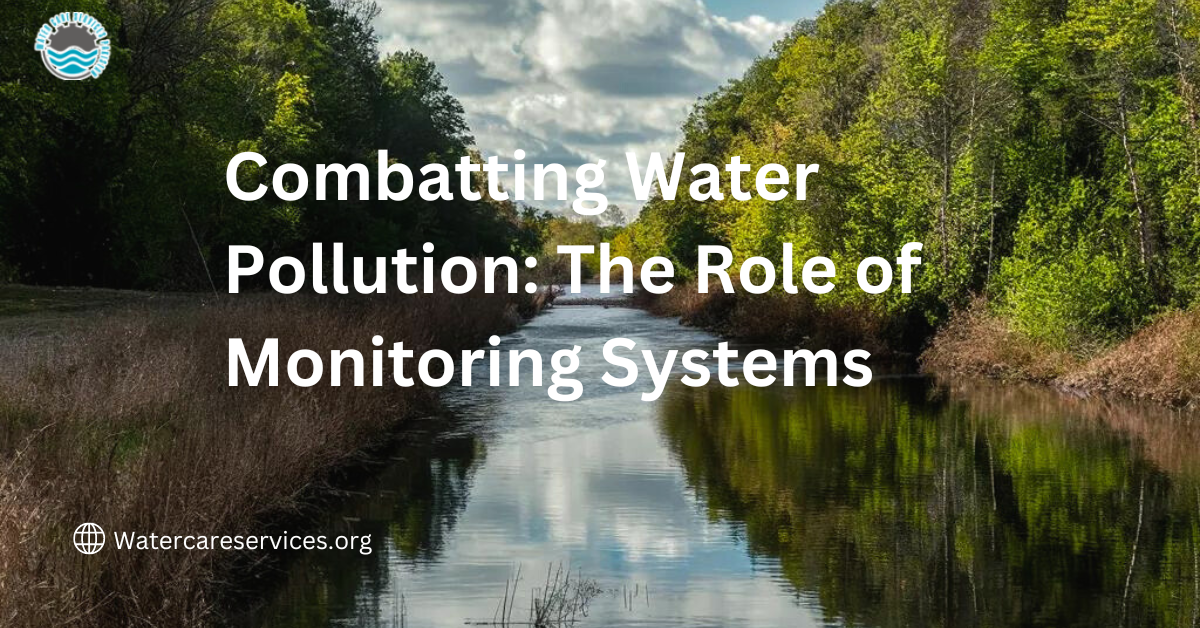Combatting Water Pollution: The Role of Monitoring Systems
Introduction The Water Quality Role of Monitoring Systems
Monitoring water pollution is paramount in safeguarding the health of our ecosystems and communities. By employing sophisticated monitoring systems, we can detect pollutants and take proactive measures to mitigate their impacts. This article provides an in-depth exploration of monitoring systems and their indispensable role in combatting water pollution.
Understanding Water Pollution
Water pollution encompasses the contamination of water bodies, resulting in adverse effects on aquatic life, ecosystems, and human health. It manifests in various forms, including chemical, biological, and physical pollution. Industrial discharges, agricultural runoff, and urban activities are primary contributors to water pollution.
Impacts of Water Pollution
The consequences of water pollution are multifaceted and far-reaching. Environmental impacts include the degradation of aquatic habitats, loss of biodiversity, and the proliferation of harmful algal blooms. Human health is jeopardized through the consumption of contaminated water, leading to illnesses such as gastrointestinal diseases and neurological disorders. Moreover, water pollution imposes significant economic burdens, affecting industries reliant on clean water sources and increasing healthcare costs.
The Need for Monitoring Systems
Traditional monitoring methods have limitations in terms of coverage and timeliness. Real-time data is crucial for promptly identifying pollution incidents and implementing effective remediation measures. Additionally, regulatory frameworks necessitate continuous monitoring to ensure compliance with water quality standards and regulations.
Types of Monitoring Systems
Monitoring systems encompass a range of technologies tailored to assess water quality accurately. Remote sensing technologies, including satellite imagery and aerial drones, provide comprehensive spatial coverage for monitoring large water bodies. In-situ sensors, such as dissolved oxygen sensors, pH sensors, and turbidity sensors, offer on-site measurements with high precision. Biological monitoring techniques, such as bioindicators and bacterial testing, provide insights into the health of aquatic ecosystems.
Advancements in Monitoring Technology
Recent advancements in monitoring technology have revolutionized water quality assessment. Artificial intelligence algorithms are integrated into monitoring systems to analyze vast datasets and identify patterns indicative of pollution events. Wireless sensor networks enable real-time data transmission, facilitating continuous monitoring in remote or inaccessible areas. Furthermore, the miniaturization of sensors enhances their portability and deployment flexibility.
Applications of Monitoring Systems
Monitoring systems serve diverse applications in water management and conservation. They facilitate water quality assessment by providing comprehensive data on pollutant levels and ecosystem health. Early warning systems alert authorities to potential pollution incidents, enabling swift response and mitigation measures. Moreover, monitoring systems aid in pollution source tracking, identifying the origins of contaminants and informing targeted remediation efforts.
Case Studies
Numerous successful case studies highlight the efficacy of monitoring systems in combating water pollution across various contexts. In urban areas, monitoring systems have been instrumental in identifying sources of pollution, such as sewage leaks and industrial discharges, leading to improved water quality. In agricultural regions, monitoring systems help monitor nutrient runoff and pesticide contamination, preserving water resources and minimizing environmental impacts. Similarly, in industrial zones, monitoring systems ensure compliance with regulatory standards and mitigate the adverse effects of industrial activities on water quality.
Challenges and Limitations
Despite their benefits, monitoring systems face challenges related to cost, maintenance, and data interpretation. The initial investment and ongoing maintenance costs of monitoring infrastructure can be prohibitive, particularly for resource-constrained regions. Additionally, ensuring the accuracy and reliability of monitoring data requires skilled personnel and robust quality assurance protocols.
Future Trends
Looking ahead, the expansion of monitoring networks is poised to enhance our understanding of water pollution dynamics and improve management strategies. Integration with smart city initiatives holds promise for developing interconnected monitoring systems that leverage data analytics and predictive modelling for enhanced decision-making. Furthermore, emerging technologies, such as advanced sensor technologies and unmanned aerial vehicles, are expected to further advance water monitoring capabilities.
Conclusion
In conclusion, monitoring systems play a pivotal role in combatting water pollution by providing timely and accurate data for informed decision-making and effective pollution management. Continued investment and innovation in monitoring technology are imperative to address the challenges posed by water pollution and ensure the sustainable management of water resources. It is incumbent upon policymakers, industries, and stakeholders to prioritize the development and deployment of monitoring systems as part of broader efforts to protect and preserve our water.


